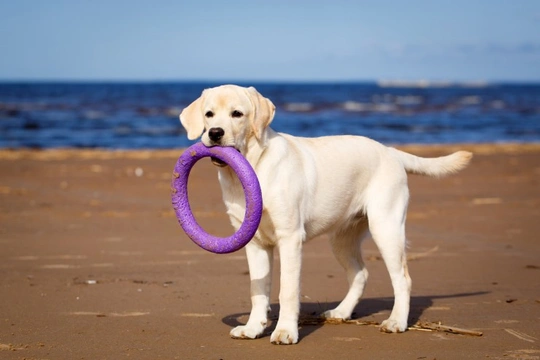
Four hidden dangers in outdoor water sources that can harm your dog
As any dog owner will know, dogs are fairly indiscriminate about what they drink, with many dogs seeming to head for the dirtiest, nastiest puddles or even the toilet bowl in preference to their clean, fresh bowl of tap water! Many dogs too love to swim, paddle or splash about in ponds, streams and the sea, and trips to the beach or nearby lakes can make for an excellent day out for both you and your dog, and give them a great chance to go swimming and stay cool!
However, even apparently clear, clean water that is full of plants and fish may potentially harbour hidden dangers that can harm your dog, and it is a good idea to find out a little bit about some of the common and yet often invisible hazards that may lurk in the lake or swim in the sea.
In this article, we will cover four hidden dangers that may be hiding in outdoor water sources. Read on to learn more.
Blue/green algae
We’ve covered the full details of the risk that blue/green algae can pose to dogs in this article, which is well worth a read, particularly if you live in some of the areas where blue/green algae tends to bloom during the summer months.
While blue-green algae is often clearly visible when present in the water, it is not always obvious just prior to an algae bloom, and so apparently clean and clear water can potentially pose a risk to swimming dogs.
Blue/green algae has a very dank, foul or musty smell to it that is unpalatable to humans but that may interest your dog, who may then develop problems such as skin rashes after swimming in affected water.
If water containing blue/green algae is drunk by your dog, this can lead to more serious problems including damage to the liver and kidneys, and potential damage to the central nervous system too.
Saltwater toxicity
Swimming in the sea can make for excellent exercise and entertainment for your dog, particularly if they are of a breed that loves to swim such as the flat coated retriever or the Newfoundland dog. However, as any person who has swallowed sea water will know, it tastes horrible and can make you feel rather unwell after ingestion, which is a good indication that it is not meant to be drunk!
While few dogs will drink a lot of saltwater out of choice, if there is not freshwater available to them, they may well lap at the seawater itself, which can lead to problems ranging from mild diarrhoea to a severe condition called hypernatremia, in which the intestines draw water from the blood to rebalance their salt levels, which can lead to pronounced and severe symptoms including seizures and collapse, which requires urgent veterinary attention.
When swimming with your dog at the beach, take them aside every quarter of an hour or so and offer them fresh water to drink, and avoid using absorbent toys on the beach that will suck up the water, and leech it into your dog’s mouth when they pick up their toys.
Jellyfish
Many people who frequent the beaches of the UK will have spotted the odd jellyfish on the shore, and jellyfish can range in size from almost invisible to the size of a large dinner plate or even bigger! Because jellyfish can be quite small and are generally clear or the same colour as the water, stings can be delivered quickly via inadvertent contact with them, and may be quite potent.
Minor stings may be no worse than the average insect bite, but if your dog runs into a large jellyfish or is stung multiple times, they may go into anaphylactic shock, which is a veterinary emergency.
Avoid beaches where you can see jellyfish on the shore, as your dog may investigate them, and also because jellyfish on the shore also indicate a good chance of there being more of them in the water!
Bacterial conditions
All natural bodies of water contain a wide range of different types of bacteria, and while some of these are not harmful or dangerous in low quantities, others can pose a health risk to your dog.
One of the most dangerous bacterial conditions that can affect water such as canals, streams, ponds and lakes in the UK is leptospirosis, which is spread through water that has been contaminated with the urine of rats or other small rodents. Leptospirosis may not become symptomatic in your dog for days or even weeks after exposure, and so it is important to keep a watchful eye out for its symptoms.
Dogs can be vaccinated against leptospirosis, which is a good idea if your dog likes to swim! Other potential waterborne bacterial dangers include cryptosporidium and giardiasis, both of which can again make your dog very sick, but for which no vaccine is available.



